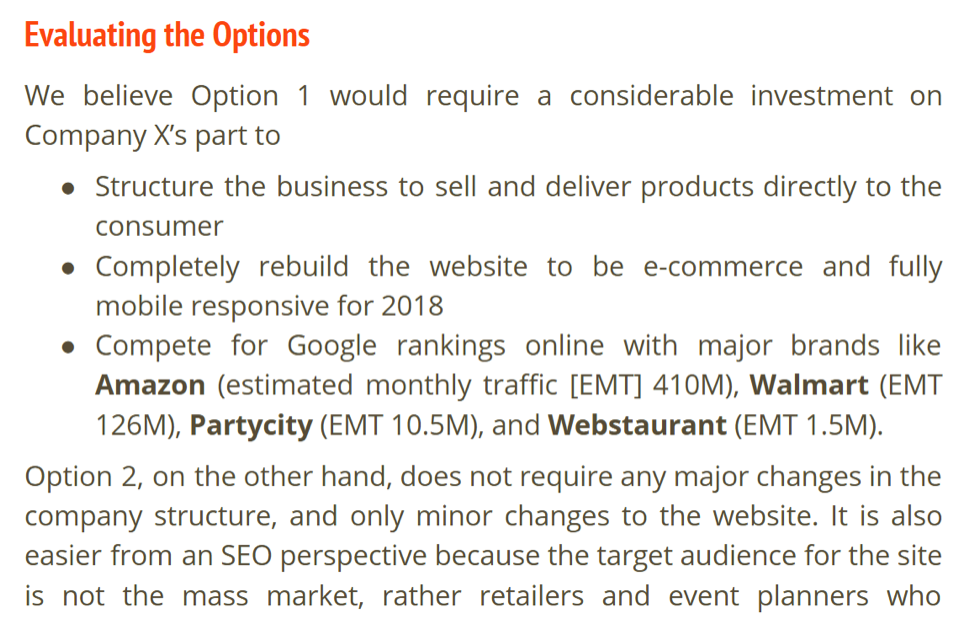You've spent days, or even weeks, hunting down a potential account. You were even granted an audience with an important decision maker at the company. Indulge in a well-earned pat on the back because it takes an average of 18 cold-calls to connect with a buyer.So if you made it to a meeting, congratulations: you've made it pretty far out in the process.
But the best part of all, you didn't only get the meeting; you weren't turned down. You were asked to submit a proposal or quote your service. In other words, the meeting was a success. But don't pop that champagne bottle just yet; there's still some work to do. In this article, we'll walk through how to write a project proposal that works and turn your prospect into a satisfied client.
How to write a project proposal that works
If you're serious about turning your prospect into a satisfied client, you need to really nail that project proposal. But don't worry, with just a bit of thought and planning you guys can be shaking hands in no time.
Clear your schedule
Seriously. Drafting a project proposal is an overlooked element of the sales process and is often thrown together slapdash-style. This is a tragic mistake. A solid project proposal can be your star closing pitcher if you just let it play. So dedicate a few uninterrupted hours to focus on writing the perfect project proposal that works for you and your client.
Understand your prospect
This may sound elementary, but salespeople and marketers often fall into the trap of believing their own hype. Get used to the idea that your prospect is not as immersed in sales and marketing as you are and start talking to them in their own language.
If you want to influence behavior, you need to know what motivates that person's behavior. To figure out what motivates your prospect's behavior, creep into their minds and try to truly understand their needs and how you're uniquely suited to fulfill them. This step requires a bit of research and creativity, but it's absolutely worth the time.
Research
Let's say your prospect is the CEO of a small brick-and-mortar company. If you want to understand their needs and expectations, you need to understand the challenges they face. What keeps them up at night? What are they preoccupied with during business hours, and after hours?
The answers to these questions will vary from prospect to prospect but they can include things like the shift to e-commerce, competition, and insufficient exposure. Identify the areas that apply to your prospect by taking a closer look at their industry and think about how you are uniquely qualified to answer those concerns. In this stage, you will often uncover priceless nuggets about your prospect's industry you haven't picked up on before; areas where your firm can help.
Drafting the proposal
Once you're armed with sufficient insight into your prospect's industry and their specific needs and expectations, you're ready to write the business proposal. I would divide the proposal into four separate sections:
- Introduction and Overview
- Challenges
- Recommendation Options
- Suggested Option
Let's take a look at each step individually:
1. Introduction and overview
In the introduction to your proposal, provide a brief summary of your meeting and an at-a-glance review of the company. Here's an example of an introduction to a project proposal that turned a prospect into a client for Precision Brands:

What we want to accomplish in this section are several things. First, we need to establish what I call a shared interest. When you show that your interests align with your prospect, you've taken a critical step toward a successful closing. When your prospect sees you've internalized the history and values of their company, a shared and mutual interest will be established.
The second part of it is pure bait. People love talking about themselves. And people love hearing other people talk about them. That's why we're so obsessed with social media notifications. Further research shows that thinking about ourselves in a positive way activates the pleasure centers in our brains.
So when you roll out a nice snapshot of your prospect's company in your intro, you've given their ego a high-five. There's no better way to hook a reader and to get them to keep on reading.
2. Challenges
In this section, you will showcase the results of your industry research. Set up the landscape of your prospect's industry and highlight the challenges they face. Be useful and provide statistics and trusted sources to back up your findings. By showing familiarity with their industry, your prospect will value the time you spent and trust you as a person who takes his profession seriously. It will also further cement your shared interest score, as your prospect will appreciate that you guys are on the same page.
3. Recommendation options
Once you've outlined the challenges facing your prospect and their industry, it's time for The Pitch. The pitch is where you offer your product or service. But you don't want to jump into the pitch right away. Doing so you will destroy the shared interest you've worked so hard to build up. So this part requires some delicacy and tact.
Obviously, no single product or service will save a company from all that ails it. There are many tools your prospect can use and your product or service is just one of them. A project proposal that works tries to wrench your prospect away from the competition by subtly steering them in the direction you want them to go.
4. Suggested option
So instead of being blunt and offering your product or service as a "Divine Savior," acknowledge your limits and offer it as one of a few options.
Of course, your option will be the most appealing, but you will couch it in a way that's classy and not in-your-face. I suggest you offer a list of three options.
Ideally, the first option should be a comprehensive solution to as many of your prospect's problems. But of course, such an option will usually be beyond budget.Here's how we put it in the aforementioned project proposal for Precision Brands:

The middle option should be your product or service; it should be helpful, uniquely meeting the needs of the prospect, and affordable and within a reasonable budget. The third option should be really cheap but lacking in substance.
By providing a list of options instead of shoving your product or service in your prospect's face you're affirming your shared interest and empowering them to make the final choice.
In the words of behavioral psychologist Dr. Susan Weinschenk:
"We like having choices because it makes us feel in control. If you want people to do stuff, give them options."
Conclusion
It is more likely than not that your prospect will see through all of this but it doesn't matter. What matters is that they will value and appreciate the fact that you a) took the time to study their company and industry, b) established a shared interest with them and c) was brave enough to consider and offer options other than your own product or service.
They know that you didn't have to do any of that. That's what matters. And that's the way to write a project proposal that works.

Avrumi Weinberger is the creative director at Precision Brands, a marketing agency based in New York City. He is also the content director for the Smarter Brands Blog, which places an emphasis on tips for content marketing, social media marketing, and insights in consumer behavior.


